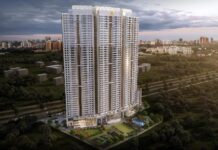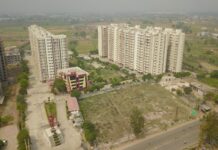- Of the total institutional investments, 49% accounted for office assets whereas 25% contributed towards the housing segment
- The city presents an off-campus student housing demand of more than 1.6 lakh beds, which is expected to increase to 2.1 lakh beds by 2023
- Employment of migrant millennials is expected to grow and cross 7.3 lakh by 2023
Pune, June 15, 2021: JLL launched an exclusive Pune city report titled “Real Estate in Post Pandemic Pune – Opportunities in the making“ which highlights that the city attracted institutional investments of ~INR 9,600 crore during 2015-20. The report further states that office assets accounted for the highest share of 49% of the total institutional investments due to robust demand, stable rentals, and low office vacancy of 5% whereas the housing segment garnered 25% share of investments.
Investment sentiments picked up during the first quarter of 2021, but subsequent lockdown has led to brief hiatus in deals. Between 2015-20, foreign institutional investors, mostly private equity funds, dominate the deal volumes in the city with a 77% share of total investments. Leading funds have acquired office space assets to build portfolio for listing through REITs. Global funds, meanwhile, have mostly transacted outright purchase of office assets.
“Pune’s urban infrastructure is set to receive a major facelift with the planned metro network and the Ring Road. The city’s metro network is expected to go operational in the next 24 months. In terms of Ring Roads, the city is getting two of them, the first of the two is under Pune Metropolitan Region Development Authority (PMRDA) and is going to be 65 meters wide. The second Ring Road which is 110 meters wide is under Maharashtra State Road Development Corporation (MSRDC). The outer Ring Road is expected to be completed first before the inner Ring Road. On the outer Ring Road, we are also expected to see a new three strip greenfield airport coming up at Purandar for which land acquisition to the tune of 4000 acres is underway. The airport is expected to have one cargo and three passengers’ strips. This will be a bigger than Panvel or Mumbai airport. Panvel airport is also expected to provide a boost to the growth story of Pune. Further, the city’s advantage of talent, technology, industry, and connectivity will propel it towards becoming the next megacity of India. As the real estate sector grows in tandem and quality assets are developed continuously, the city is expected to provide huge opportunities for occupiers, developers and investors, across the globe,” said Sanjay Bajaj, Managing Director – Pune, Logistics & Industrial, JLL India.
“Investors are keen to evaluate Grade A office and industrial assets, as both asset classes have strong fundamentals and will provide stable long-term returns. Office and industrial focused funds are likely to pursue high value deals in relevant micro-markets of the city. New investment platforms are expected to be formed in 2021,” he further added.
“Driven primarily by IT/ITeS, BFSI, Fintech, R&D, and manufacturing occupiers, Pune has grown rapidly as a market and has been witnessing leasing activity on an average of 5 million sq ft per year (except 2020) with peak demand of 6.4 to 6.5 million sq. ft in 2018-2019. The steady demand for Grade A office spaces led to increased occupancy, resulting in vacancy levels steadily dropping from ~15% in 2010 to ~5% in 2020, along with a strong growth in rentals during the same time frame. Large global Institutional investors have recognized this growth potential and have established a strong presence in the Pune office market. Going forward, the presence of these institutional owners is only expected to increase and will further work towards increasing the attractiveness of Pune as an office market. In addition, the HNI demand has been exemplary over a sustained period of time and has contributed largely to both core asset sales and quality speculative assets which were built to suit the needs of the occupiers,” stated Samantak Das, Chief Economist and Head of Research & REIS, JLL India.
Pune offers 31 million sq. ft of REITable office space.
The office market accounts for a sizeable share of the two listed REITs, highlighting the potential for REITable office assets from the city. The risk mitigation strategy followed by REITs entails asset acquisition across cities and asset classes. JLL’s research indicates that 31 million sq ft of office space stock would be eligible for REITs. The REITable stock includes all the operational lease-only projects with area greater than or equal to 2,00,000 sq ft and a vacancy of less than or equal to 20%. Most of these projects are owned and operated by prominent developers. Kharadi, Baner, Balewadi, and Hinjewadi which are major IT-office space hubs, would account for 49% of the total REITable office space in Pune.
Logistics and Industrial
Logistics and Industrial has been one of the consistently performing markets in the country due to its balanced industrial sector and growing consumption base. It is home to several foreign industrial manufacturers and a sizeable R&D base for engineering, driving a sizeable chunk Maharashtra’s GDP. The key drivers that have been fueling strong growth in the warehousing sector have been mainly Pune’s large and diversified industrial manufacturing sector and a growing services sector that has influenced consumption led demand. The city is the second most important urban and industrial node of the state of Maharashtra that contributes a significant chunk to India’s economic output. The industrial base is expected to get a further boost from three planned industrial corridors passing through the city. Today, Pune attracts nearly 20% of the entire industrial investment in the country. It is an established automobile and durable goods manufacturing hub, with several Indian and foreign industry majors in the field.
The Pune industrial and warehousing market has grown steadily, with the total stock increasing at a CAGR of 19% over the last 5 years to reach nearly 27 million sq ft in 2020. Out of this, nearly 65% is Grade A stock. More importantly, the market has been characterised by good demand-supply dynamics in the last few years, which resulted in vacancy levels hovering around the 10% mark. JLL expects that the healthy demand-supply dynamics will continue over the next few years, making Pune one of the most attractive markets in the country for the development of industrial parks and warehouses. Although Pune has been an established manufacturing hub, it has been witnessing significant growth in warehousing activities from 2018, especially in the Chakan-Talegaon and Nagar Road submarkets. The city’s warehousing market witnessed a dip owing to the pandemic and related effects. The market started gaining momentum in Q1 2021 with construction of delayed projects getting completed in this quarter. This resulted in an increase in the growth of supply by 30% as compared to previous quarter and 0.72 million sq. ft. of absorption in Q1 2021. It is expected that the absorption will bounce back to pre-pandemic levels of 2018 by 2021. The post-pandemic market recovery would be supported by the continued growth in demand from sectors such as e-commerce, 3PL/ logistics, FMCG, etc. The absorption levels are expected to gain further momentum in 2022 and would be nearing 4 million sq ft.
Manufacturing in Pune is concentrated in the northern region with Chakan, Talegaon and Nagar Road accounting for most of the activity. Resultantly, this region also emerged as the base for the development of the warehousing sector in the city.
Rise in business models of operators
Most student housing and co-living players currently operating in Pune have adopted the asset-light strategy of leasing residential units or an entire building from the property owner, and sub-leasing individual rooms or beds to end-users. Some operators also sign long-term management agreements with landlords to run their premises as a student housing / co-living facility. In this setup, the lease agreement is directly between the property owner and the end-user. The operators act as custodians of the property and provide value-added services to the end-user. Over the last couple of years, Pune has also witnessed the emergence of purpose-built facilities where the operator partners with a developer to build properties to be run as co-living or student housing setups. Selected co-living and student housing accommodation are in the north-western regions of Hinjewadi-Wakad-Tathawade and Baner-Balewadi, followed by Viman Nagar and Kharadi in the North East. Only a few organised setups are present in the Central part of the city due to restricted supply of relevant residential properties, which can be converted into co-living or student housing setups.
Corporate Comm India (CCI Newswire)


















